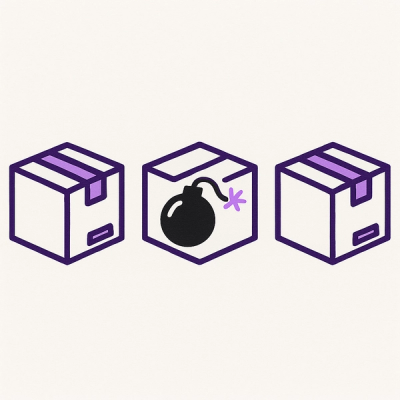go-face 

go-face implements face recognition for Go using dlib, a
popular machine learning toolkit. Read
Face recognition with Go
article for some background details if you're new to
FaceNet concept.
Requirements
To compile go-face you need to have dlib (>= 19.10) and libjpeg development
packages installed.
Ubuntu 18.10+, Debian sid
Latest versions of Ubuntu and Debian provide suitable dlib package so just run:
sudo apt-get install libdlib-dev libblas-dev libatlas-base-dev liblapack-dev libjpeg-turbo8-dev
sudo apt-get install libdlib-dev libblas-dev libatlas-base-dev liblapack-dev libjpeg62-turbo-dev
macOS
Make sure you have Homebrew installed.
brew install dlib
Windows
Make sure you have MSYS2 installed.
- Run
MSYS2 MSYS shell from Start menu
- Run
pacman -Syu and if it asks you to close the shell do that
- Run
pacman -Syu again
- Run
pacman -S mingw-w64-x86_64-gcc mingw-w64-x86_64-dlib
-
- If you already have Go and Git installed and available in PATH uncomment
set MSYS2_PATH_TYPE=inherit line in msys2_shell.cmd located in MSYS2
installation folder
- Otherwise run
pacman -S mingw-w64-x86_64-go git
- Run
MSYS2 MinGW 64-bit shell from Start menu to compile and use go-face
Other systems
Try to install dlib/libjpeg with package manager of your distribution or
compile from sources. Note that go-face won't
work with old packages of dlib such as libdlib18. Alternatively create issue
with the name of your system and someone might help you with the installation
process.
Models
Currently shape_predictor_5_face_landmarks.dat, mmod_human_face_detector.dat and
dlib_face_recognition_resnet_model_v1.dat are required. You may download them
from go-face-testdata repo:
wget https://github.com/Kagami/go-face-testdata/raw/master/models/shape_predictor_5_face_landmarks.dat
wget https://github.com/Kagami/go-face-testdata/raw/master/models/dlib_face_recognition_resnet_model_v1.dat
wget https://github.com/Kagami/go-face-testdata/raw/master/models/mmod_human_face_detector.dat
Usage
To use go-face in your Go code:
import "github.com/Kagami/go-face"
To install go-face in your $GOPATH:
go get github.com/Kagami/go-face
For further details see GoDoc documentation.
Example
package main
import (
"fmt"
"log"
"path/filepath"
"github.com/Kagami/go-face"
)
const dataDir = "testdata"
var (
modelsDir = filepath.Join(dataDir, "models")
imagesDir = filepath.Join(dataDir, "images")
)
func main() {
rec, err := face.NewRecognizer(modelsDir)
if err != nil {
log.Fatalf("Can't init face recognizer: %v", err)
}
defer rec.Close()
testImagePristin := filepath.Join(imagesDir, "pristin.jpg")
faces, err := rec.RecognizeFile(testImagePristin)
if err != nil {
log.Fatalf("Can't recognize: %v", err)
}
if len(faces) != 10 {
log.Fatalf("Wrong number of faces")
}
var samples []face.Descriptor
var cats []int32
for i, f := range faces {
samples = append(samples, f.Descriptor)
cats = append(cats, int32(i))
}
labels := []string{
"Sungyeon", "Yehana", "Roa", "Eunwoo", "Xiyeon",
"Kyulkyung", "Nayoung", "Rena", "Kyla", "Yuha",
}
rec.SetSamples(samples, cats)
testImageNayoung := filepath.Join(imagesDir, "nayoung.jpg")
nayoungFace, err := rec.RecognizeSingleFile(testImageNayoung)
if err != nil {
log.Fatalf("Can't recognize: %v", err)
}
if nayoungFace == nil {
log.Fatalf("Not a single face on the image")
}
catID := rec.Classify(nayoungFace.Descriptor)
if catID < 0 {
log.Fatalf("Can't classify")
}
fmt.Println(labels[catID])
}
Run with:
mkdir -p ~/go && cd ~/go
mkdir -p src/go-face-example && cd src/go-face-example
git clone https://github.com/Kagami/go-face-testdata testdata
edit main.go
go get && go run main.go
Test
To fetch test data and run tests:
make test
FAQ
How to improve recognition accuracy
There are few suggestions:
- Try CNN recognizing
- Try different tolerance values of
ClassifyThreshold
- Try different size/padding/jittering values of
NewRecognizerWithConfig
- Provide more samples of each category to
SetSamples if possible
- Implement better classify heuristics (see classify.cc)
- Train network (
dlib_face_recognition_resnet_model_v1.dat) on your own test data
License
go-face is licensed under CC0.



